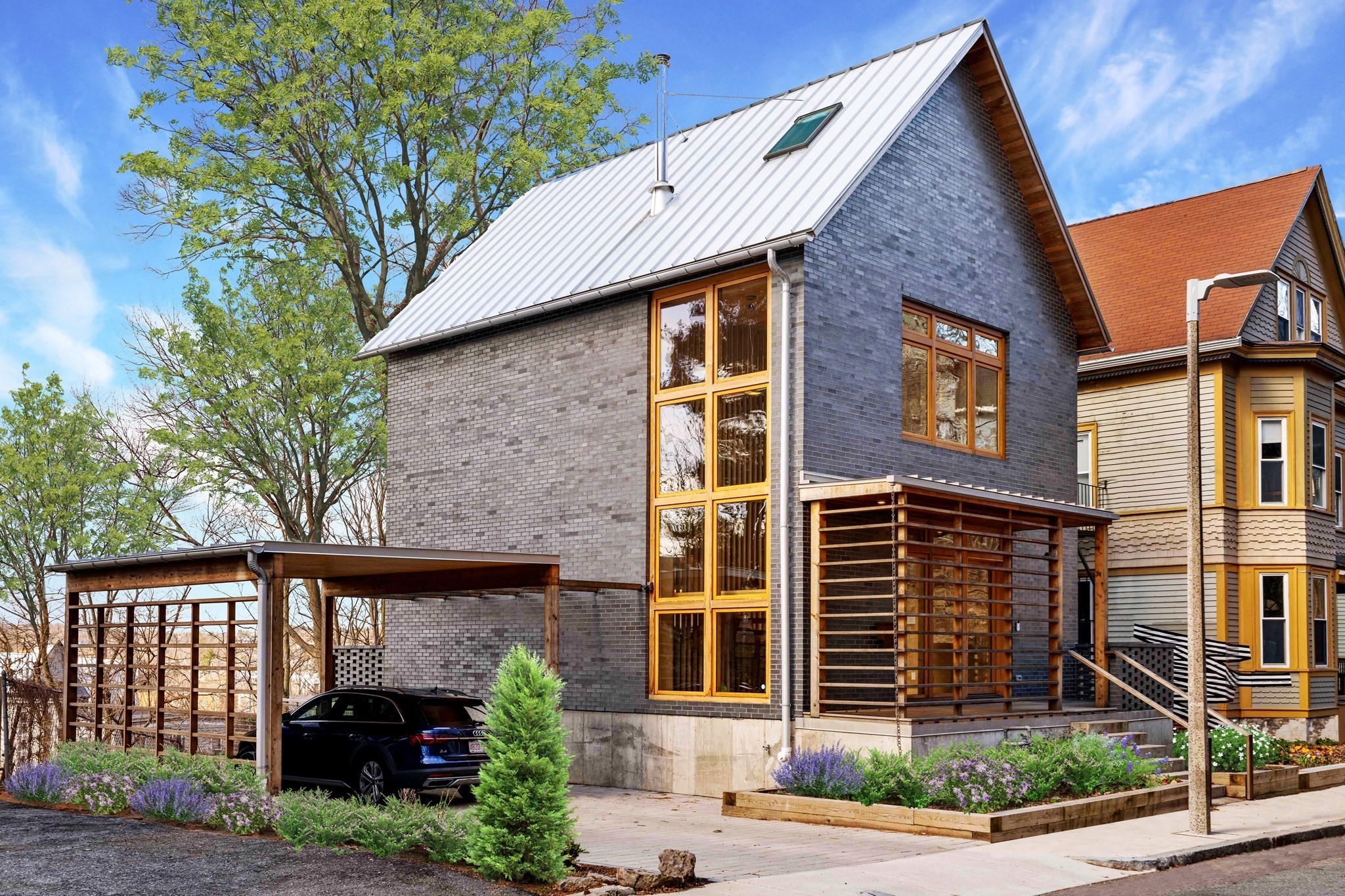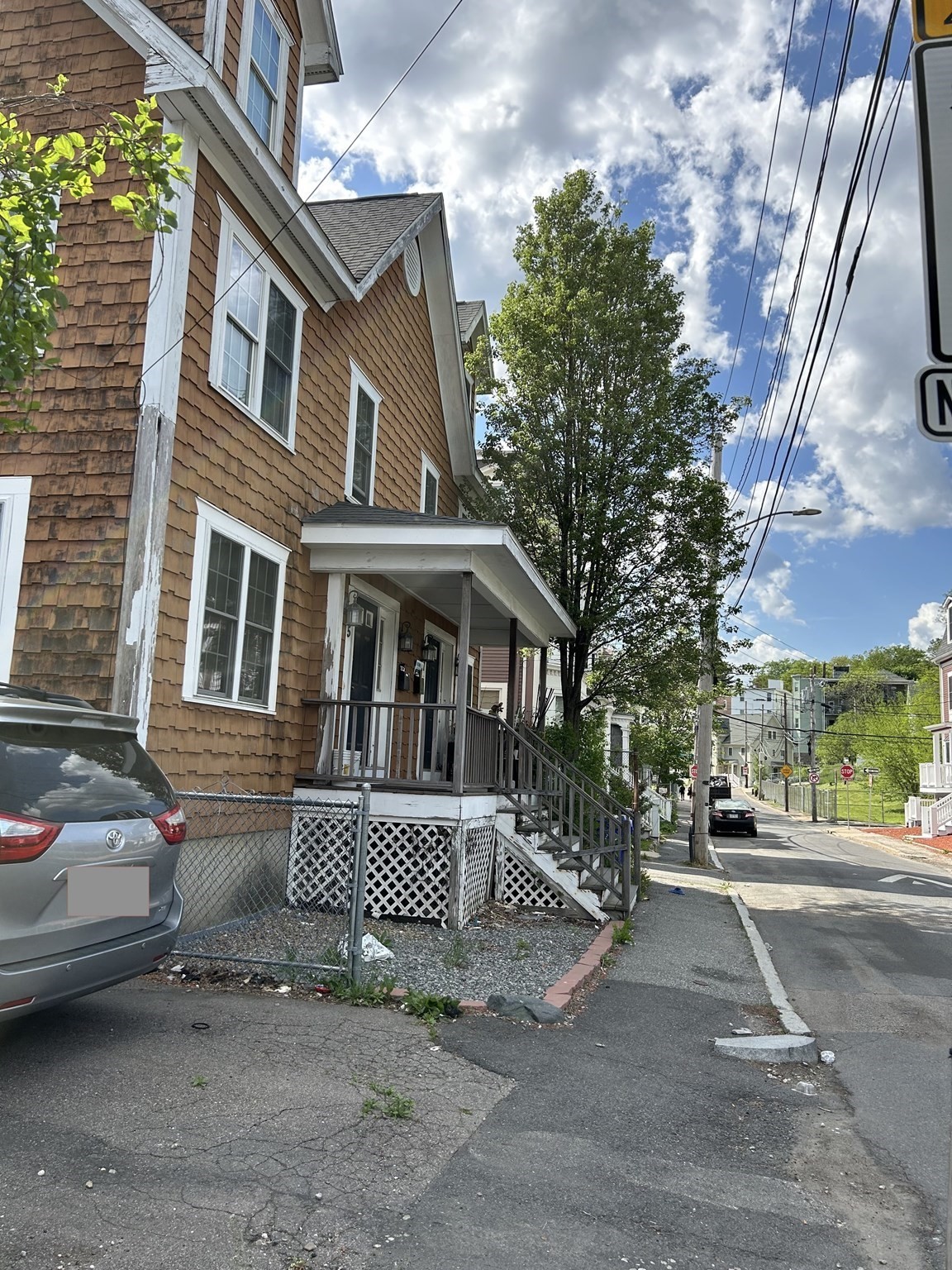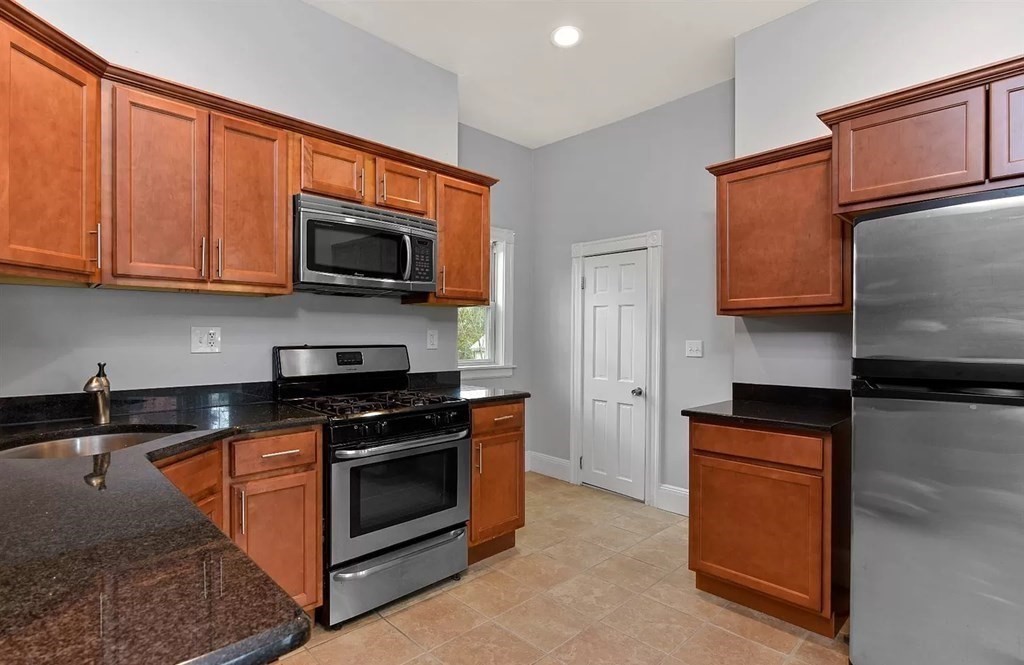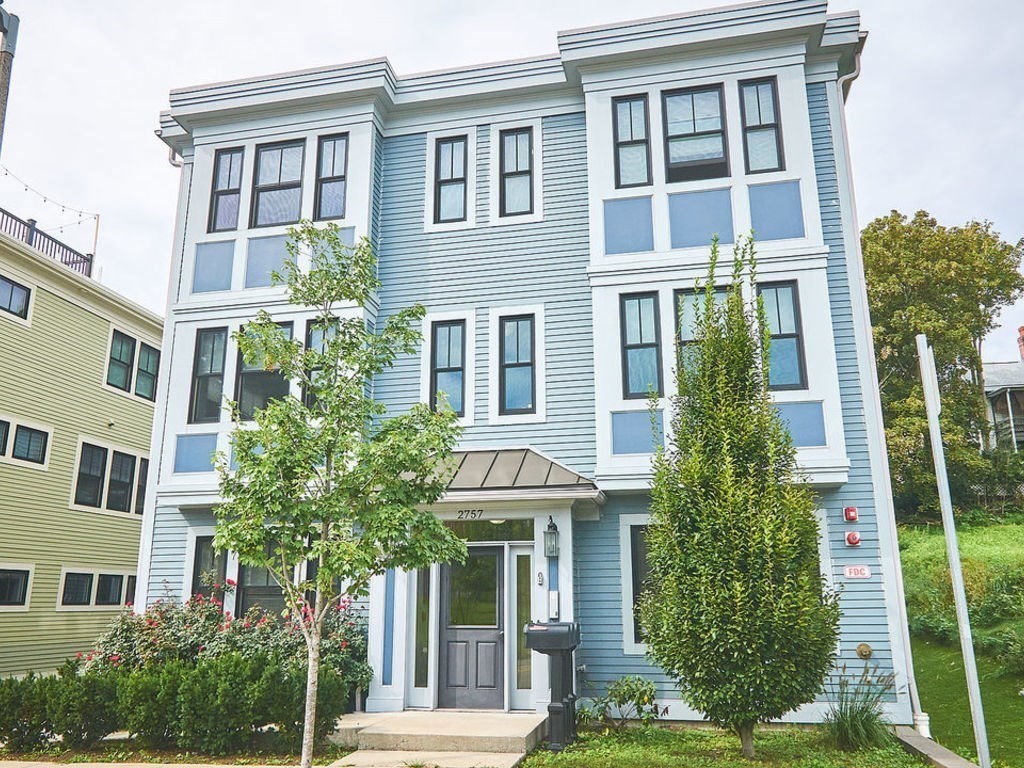Related Fort Hill Property Searches
Fort Hill Condos for Sale
Fort Hill Multi-Family Homes for Sale
Fort Hill Investment Property for Sale
Fort Hill Commercial Real Estate
Fort Hill Land for Sale
Fort Hill is a tranquil residential neighborhood giving easy access to the surrounding area of Boston. It covers only 0.4 square mile. The boundary to the north is Malcom X Boulevard, east is Washington Street, west is Southwest Corridor Park and Columbus Avenue, and south is Ritchie Street and Marcella Street. The streets are lined with trees and there are small parks throughout the neighborhood. Homes for sale in Fort Hill can be few and far between because of this neighborhood’s popularity. Stick with Boston Pads and when homes become available you are sure to find the perfect property.
Homes for Sale in Fort Hill Roxbury, MA
Fort Hill is a tranquil residential neighborhood giving easy access to the surrounding area of Boston. It covers only 0.4 square mile. The boundary to the north is Malcom X Boulevard, east is Washington Street, west is Southwest Corridor Park and Columbus Avenue, and south is Ritchie Street and Marcella Street. The streets have trees along them, and there are small parks throughout the neighborhood.
History
Country estates covered most of the Fort Hill area before the American Revolution. They were known for their Roxbury Russet apple tree orchards. Early cultivators developed the Roxbury Russet because it kept well through winter storage and it made good cider. It is the oldest type of apple developed in the United States, dating to 17th century Roxbury.
Fort Hill became strategically important at the outbreak of the American Revolution. Before the advent of the later massive landfill projects, land access to Boston was limited to a narrow peninsula. The elevation of Fort Hill dominated this access. The Continental Army was able to close off the land route to besiege Boston by building fortifications here.
Fort Hill changed to a residential community in the early 19th century. This change occurred due to improvements in transportation. The road into Boston was improved, and in the 1820’s a horse-drawn bus line began service. In 1835, the Boston to Providence rail line opened. Each improvement in accessibility attracted wealthy real estate developers whose projects drew more upper class residents to the area.
In 1868, Boston annexed Fort Hill with Roxbury, which lead to further suburban development and infrastructure improvement. In 1889, the electric trolley line began service, further improving Fort Hill’s accessibility as a suburb of Boston.
Real Estate
In this increasingly desirable market, the number of homes for sale in Fort Hill at any given time is limited. Townhouses are more common, and prices start around $450,000. Most of the residences in Fort Hill are older three story multifamily houses, which can command prices around $2,500,000 when they are available. There are some small to medium size apartment buildings. Newer construction tends to be townhouses. Developers have subdivided many of the grand old mansions into multiple units.
Transportation near Homes for Sale in Fort Hill
Roxbury Crossing MBTA Station is located at Fort Hill’s northwest corner at 1400 Tremont Street. The Orange Line serves this station, as do the 66, 29, and 22 bus lines. There is both an escalator and an elevator here. There are also fare vending machines. While the boarding area is open to the weather, there is overhead cover for protection from precipitation. This is the most convenient ‘T’ stop for students commuting to Roxbury Community College.
Jackson Square MBTA Station is located just to the southwestern edge of Fort Hill at 1500 Columbus Avenue, where it intersects with Centre Street. The Orange Line serves this station, as do the 44, 41, 29, 22, and 14 bus lines. There is an elevator here, but the escalator only goes up. There are vending machines to purchase fares. Pigeons nesting in the station provide entertainment.
Bus Stops are located along Malcom X Boulevard, Columbus Avenue, Centre Street, and Washington Street. There are two bus stops on Dudley Street, and one bus stop on Roxbury Street.
The traffic within Fort Hill is moderate, as the area is almost all residential. No public parking garages are located directly near Fort Hill homes for sale, but most residences have their own parking. Parking for guests is limited, and residential stickers are required in many areas, or parking is restricted to a two-hour limit. Uber, Boston taxi services, and Lyft are all available near homes for sale in Fort Hill.
Healthcare
Although Fort Hill has no medical facilities located directly within its boundaries, Boston Medical Center and Beth Israel Deaconess Medical Center are both located less than two miles away from homes for sale in Fort Hill.
Cable/Internet providers near Homes for Sale in Fort Hill
Dish TV, RCN, DirecTV, and Comcast all supply TV service within Fort Hill. Viasat, Comcast, and RCN can supply just internet service by itself. RCN and Comcast offer package combinations of internet and TV services.
Education
Roxbury Community College is located at 1234 Columbus Avenue. It is a co-educational, open-access, public community college that offers associate degrees, community and corporate education programs, online courses, lifelong learning programs, and certificate programs. The Accreditation Commission for Education in Nursing (ACEN), the New England Association of Schools and Colleges (NEASC), and the Joint Review Committee on Education in Radiologic Technology (JRCERT) have all granted accreditation to Roxbury Community College.
James P Timilty Middle School is located at 205 Roxbury Street. It is a magnet school of the Boston Public Schools system and serves 6th through 8th grade students. There are 371 students with a student to teacher ratio of 12 to 1.
Nathan Hale School is located at 51 Cedar Street. As part of the Boston Public Schools system, when students graduate here they can obtain assignment to James P Timilty Middle School. Kindergarten students through 5th grade students attend this community-based elementary school. This is a magnet school with 174 students and the student to teacher ratio is 17 to 1.
Paige Academy is located at 26/28 Highland Avenue. This private school serves children from six to twelve years old with an elementary school curriculum. Preschool, toddler, and infant programs are also available. In addition to academics, there are daily classes in theater and storytelling, art, dance, and music. The school building is a lovely 19th century mansion. There are 70 students, with a student to teacher ratio of 8 to 1.
Landmarks & Historic Places
Highland Park
Highland Park is located at 22-98 Fort Avenue. The hill where Highland Park sits gives the Fort Hill neighborhood its name. When the colonial militia besieged Boston at the start of the American Revolution, they fortified this hill, referring to it as Roxbury High Fort. There is a commemorative plaque in front of Fort Hill Tower memorializing the event with this inscription:
“On this eminence stood ROXBURY HIGH FORT, a strong earthwork planned by Henry Knox and Josiah Waters and erected by the American Army June 1775 – crowning the famous Roxbury lines of investment at THE SIEGE OF BOSTON.”
Guns up here could support the Lower Fort that the besiegers built in front of the hill within an area now bounded by Highland Street, Linwood Street, and Cedar Street.
The prominent 19th century landscape architect, Frederick Law Olmstead, designed Highland Park’s landscaping. It is a lovely open green space where many area residents bring their dogs, picnic, or just enjoy being outdoors. This is an asset to consider when looking at homes for sale in Fort Hill; it is like having an extended yard.
Fort Hill Tower
Fort Hill Tower is located in Highland Park. The tower is an unmistakable landmark overlooking the Fort Hill neighborhood. It seems otherworldly, or an embellishment built by Walt Disney – a white fairy-tale Gothic Revival tower with light green roofs. Despite some popular folklore, Fort Hill Tower was not part of the ramparts of the Roxbury High Fort. The Cochituate Water Company built it in 1869 to house a tall water tank that increased the pressure in the public water supply. This 130-foot tall tower sits on the highest elevation in Roxbury, which is 160 feet, to maximize the pressure increase due to gravity. Later improvements to the public water supply system eventually rendered it obsolete.
Regardless of the now defunct practical purpose of Fort Hill Tower, it is a wonderful, whimsical landmark near homes for sale in Fort Hill. There is a spiral staircase winding upward around the water tank inside the tower. Around 1900 the park development project added a wrought iron balcony as an observation deck circling the tower top. Fort Hill Tower had fallen into bad condition by the 1960’s, so the municipal authorities removed the balcony.
To everyone’s delight, the City of Boston began renovations of the tower in 2013, restoring the original materials and preserving the structure. The City of Boston periodically opens Fort Hill Tower to the public; information can be obtained from the City and from the Roxbury Historical Society. The last time this occurred was May 5, 2019. This is one of the great attractions near homes for sale in Fort Hill.
First Church in Roxbury
First Church in Roxbury is located at 10 Putnam Street. This meetinghouse is Boston’s oldest wood framed church, dating from 1804. With its clock tower steeple, it is an iconic example of Federal Meeting House Style, exactly the type of church one would expect to see in New England.
The current building is actually the fifth meetinghouse to occupy this site. Early colonists built the first meetinghouse in 1632. The congregants erected new buildings here in 1674, 1741, and 1744, before raising the current building in 1804. The fourth meetinghouse played a role in the beginning of the American Revolution. One of the three men who rode to warn the colonial militia, William Dawes, left from here when the British soldiers set out for Lexington. When the colonial army besieged Boston they used the belfry as a signaling station, and British bombardment damaged the building. The congregation did not hold religious meetings here during the siege.
John Eliot Square
John Eliot Square is the small park located where Dudley Street, Roxbury Street, Highland Street, and Centre Street meet in front of the First Church in Roxbury. When the first colonists founded Roxbury in 1630, this was the center of the original town. It is included In the National Register of Historic Places.
John Elliot was significant for his work as a Puritan missionary. He served Native Americans around the Massachusetts Bay Colony. He had translations printed in the Algonquin language of educational and religious texts. Eliot believed that he needed to provide converts with writings in their own language, and that it was his mission to go beyond just converting Native Americans to English religion.
He wanted to bring them to the English way of life as equals, and provide them with the means of establishing self-governing towns that the English theocratic government of the time would recognize and integrate into their colonial establishment. John Eliot felt that doing this would be good for everyone involved. In 1654, he distributed the first primer in Algonquin, then the first Algonquin New Testament in 1661, and in 1663, he produced the first Algonquin Old Testament. In fact, the Algonquin Bible is considered the first complete edition produced in the Western Hemisphere, and it came from the first printing press in the American British colonies.
Roxbury Heritage State Park
Roxbury Heritage State Park is located at 183 Roxbury Street. The principal attraction is the Dillaway-Thomas House. Constructed as the First Church in Roxbury parsonage, it served as General John Thomas’ headquarters between April 1775 and March 1776, while he commanded the wing of the Continental Army deployed in Roxbury while Boston was under siege. The Commonwealth Department of Conservation and Recreation/Division of Urban Parks and Recreation operates Roxbury Heritage Park. The Dillaway-Thomas House is remarkable as one of the few 18th century residences to survive in Boston. Since the renovation, the house is now a museum, and another example of historical preservation near homes for sale in Fort Hill.
General John Thomas was one of the prominent commanders laying siege to Boston. Similar to many senior officers of the new Continental Army, his experience as an officer came from his service during the French and Indian War. He commanded the wing of the besieging army in Roxbury, and was responsible for closing off the land access to Boston.
General Thomas commanded a pivotal action during the siege of Boston. He led the force of some 2,500 Continental troops that seized Dorchester Heights in March 1776. When they fortified the heights and emplaced the heavy artillery that had come from Fort Ticonderoga, they took the British by surprise. Unable to dislodge this heavy battery, the British had to withdraw from Boston. Sadly, most people do not remember the contribution of General John Thomas to the American Revolution. He died of smallpox during the retreat of the failed expedition mounted to invade Canada.
Islamic Society of Boston Cultural Center
Islamic Society of Boston Cultural Center, located at 100 Malcom X Boulevard, is a community center and mosque that serves the Greater Boston Area. It is the largest mosque in New England, and serves a diverse community of congregants who come from sixty-four different nationalities. Their main structure contains 70,000 square feet, and houses the mosque, a social service organization, a school, a large space used for events and functions, and a café.
William Lloyd Garrison House
William Lloyd Garrison House, also known as Rockledge, is a National Historic Landmark located at 125 Highland Street. Built in the 1850’s on the large rock outcropping above and set back from Highland Street, Rockledge is a fine example of Italianate architecture. The original owner was Joseph W. Hunnewell, a druggist from Boston. William Lloyd Garrison lived here from 1864 until he died in 1879. It is because of his efforts as an abolitionist and social reformer that Rockledge became a landmark and historic site. Until 1900, the Garrison family retained possession of the property. The Rock Ledge Improvement Association briefly maintained the property for a few years afterwards.
William Lloyd Garrison House in the 1900’s
In 1904, the Episcopal Sisters of the Society of Saint Margaret purchased the property. They had alterations made to the house to use it as a nursing facility and hospital. Over time, the building evolved to become administration offices and a convent for the Society of Saint Margaret Postulants. They added a large addition to the house in 1962, to serve as the main convent building. In 1992, they added another large addition. At this point, they had preserved the structure of the original William Garrison House as one small wing of a much larger institutional building. Novices and postulants of the order lived here, and families from outside Boston temporarily stayed here while their children received treatment at nearby hospitals. The Society of Saint Margaret Postulants also renovated the carriage house for use by the convent.
In 2012, the Society of Saint Margaret sold the entire complex of buildings and property to Emmanuel College, as they could no longer afford to maintain it. Emmanuel’s College Notre Dame Campus is the current appellation of this property. The students here form a work-study community that serves the local neighborhood. The original structure of William Lloyd Garrison House is mostly intact, despite all the changes made since he lived here.
About William Lloyd Garrison
William Lloyd Garrison was famous not only as an abolitionist, but also as a suffragist, journalist, and social reformer. In partnership with Isaac Knapp, he founded and edited The Liberator abolitionist newspaper in 1831. He continued as editor until publication ceased slavery was abolished on December 6, 1865, with the Thirteenth Amendment to the United States Constitution.
William Lloyd Garrison established the New-England Anti-Slavery Society in 1832. He was a vociferous advocate for “immediate emancipation”, rather than one of the transitional plans proposed at the time. He embraced women’s rights in 1837, becoming a prominent advocate and supporter for women’s suffrage. By supporting both slave emancipation and women’s rights, he sparked even greater controversy, as not everyone who supported one cause would support the other. Some of his allies took issue with his embrace of both. William Lloyd Garrison’s seated bronze statue is one of the memorials installed along the Commonwealth Mall in Back Bay.
Spooner-Lambert House
Spooner-Lambert House is located at 64 Bartlett Street. It is noteworthy as the third oldest building in Roxbury. Major John Jones Spooner, Roxbury Artillery’s first commanding officer, had the house built in 1782 in the Georgian style popular at the time. The second owner, Captain William Lambert, added on additional elements in Federal style. This unique house remains preserved as a historic building. Four condominium units now subdivide the house, and they still have many of the original features.
Alvah Kittredge House
Alvah Kittredge House is located at 64 Bartlett Street. Kittredge was a prominent real estate developer when she built the house in 1836. This Greek revival mansion features a two-story portico supported by six Ionic columns. It is an outstanding example of the architecture built in the early 19th century, as Roxbury became one of Boston’s new, upscale suburbs.
Alva Kittredge House sits on part of the site of the Roxbury Low Fort the American troops built during the siege of Boston. The irony is that, although The Boston Landmarks Commission designated this house as a Boston Landmark, the landscaping displaced part of the Roxbury Low Fort, which also otherwise might stand for preservation. Originally, the Alvah Kittredge House possessed much larger landscaped grounds, including a garden and fountain in the front. From 1991 until 2011, the house was vacant, but in 2014, Historic Boston Incorporated completed a lovely restoration.
Area Attractions
Southwest Corridor Park
Southwest Corridor Park is located along the western edge of Fort Hill. This is a greenway operated by the Massachusetts Department of Conservation and Recreation. The Southern end is at the Forest Hills Park MBTA Station. It runs alongside the Orange Rail Line past the edge of Fort Hill, north through Northeastern University, and continuing on to Copley Place and the Back Bay – South End MBTA Station. From one end to the other, it is 4.7 miles long. This would be an alternative way to go from homes for sale in Fort Hill to the area of Back Bay and the South End. Southwest Corridor Park is open from dawn to dusk.
Public Parks and Gardens
Public Parks and Gardens are scattered through Fort Hill. Alvah Kittredge Park, with its open greenspace and picnic tables is located where Highland Avenue and Linwood Street meet Highland Street. Right nearby is the Alvah Kittredge Community Garden, where local residents can sign up to cultivate their own garden plots. Across Linwood Street is the Highland Park 400 Garden, which abuts Alan Crite Community Garden, which has a frontage on Cedar Street. Margaret Wright Memorial Garden is on Fort Avenue. Thornton Street Urban Farm and Community Gardens is located at 95 Thornton Street. In partnership with Hawthorne Youth and Community Center, they host family and youth programs.
Fort Hill also has some areas of urban “wildscape”. John Eliot Square Urban Wild is located on Centre Street. Rockledge Street Urban Wild is between Logan Street and Rockledge Street. Cedar Juniper Natural Area is located on Cedar Street near Washington Street.
Playgrounds & Green Space
There are a few municipal playgrounds in Fort Hill. Marcella Playground is located where Ritchie Street and Marcella Street meet. There is a baseball diamond here with bleachers, as well as two basketball courts and a tennis court. Jeep Jones Park has two basketball courts, as well as a green space with a lovely bronze statue by Fern Cunningham entitled “The Value of a Life”. Dorr Street, Millmont Street, and Lambert Street border lambert Avenue Playground. It is an open grassy space with trees and a children’s playscape.
There are other traditional municipal parks with pathways and open grassy spaces. Cedar Square Park is a quadrangle bounded by Cedar Street, Juniper Street, Cedar Square, and Thornton Street. Linwood Park is a small open space at the end of Linwood Street near Centre Street. King Street Play Area is an inviting space with trees and grass, surrounded by a wrought iron fence and accessed through a brick and wrought iron gateway. Dudley Square Plaza is a triangular open grassy space with trees and park benches. It is located where Dudley Street, Malcom X Boulevard, and Washington Street come together.
Things to Do near Homes for Sale in Fort Hill
Ashur Restaurant is located at 291 Roxbury Street, a couple of blocks from Roxbury Community College. They serve delicious Halal Middle Eastern and North African food in a casual establishment. Local patrons rave about the food. The portions are large and the dishes are lovingly prepared in this family restaurant. Ashur won a Best of Boston Magazine Award. The restaurant is open seven days a week, 7:30am to 10pm Monday through Thursday and 7am to 11pm Friday through Sunday. This is a unique and rare gem near homes for sale in Fort Hill.
Fort Hill Bar and Grill is located at 2805 Washington Street. This location has hosted a tavern or restaurant since 1925. The current establishment is a fun place with live music, dancing, and a menu of tasty food with Latin American flavor. They are open seven days a week, from 11:30am to 1am. This is a place for good food, drink, and a rowdy good time, near homes for sale in Fort Hill.
Events near Homes for Sale in Fort Hill
While there is no schedule of new performances at Highland Park, it would be worth checking with the Berklee College of Music. They held a summer concert, Jazz at the Fort, in 2018 near the Fort Hill Tower.
What it is like to Live near Homes for Sale in Fort Hill
The charming and tranquil aspects of this neighborhood are a major attraction for buyers seeking homes for sale in Fort Hill. While the neighborhood lacks many opportunities for activities, such as barhopping and dining out, Fort Hill is a nice quiet place to come home to. Trees line the streets and there is a lot of park space. Public transportation is readily available to reach all the cultural resources and lively recreation of Boston.















































































































































































































